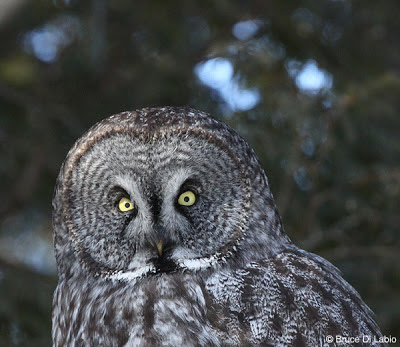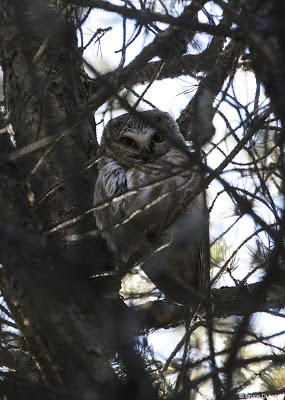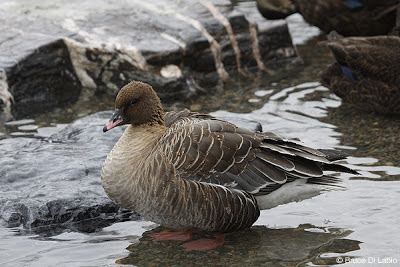After birding Amherst Island yesterday we headed up to Ottawa for the Great Gray Owls. Arriving early afternoon we parked at P8 parking lot and walked backed along the Rockcliffe Parkway to Green's Creek and followed the well beaten path to the edge of the field /forest. Two Great Gray Owls were located roosting in deciduous trees approximately 200 metres apart. We didn't observed the 3rd owl but it was likely nearby. This is still the most reliable location to observed Great Gray's this winter.
Good birding, Bruce
Directions:
From downtown Ottawa, go east on the Queensway and take the left fork toward Orleans. Exit at the Montreal Road exit. Turn right at St Joseph Blvd. Continue along St Joseph Blvd. until you come to the lights where you turn left onto the Rockcliffe Parkway (at this intersection on St Joseph Blvd., the Rockcliffe Parkway is on the left and Bearbrook Road is to the right). Continue along the Rockcliffe Parkway. The first bridge you cross is the one going over the highway. Continue quite a ways along and the second bridge you see is the one that crosses over Green's Creek. The owls are located in the field on the left side of that bridge. It is public NCC park land so open to all. However, do not park alongside the road there or you may get ticketed. Instead, drive 1 kilometer past that spot and park at parking lot P8 on your left. Then walk back to the bridge.
Good birding, Bruce
Directions:
From downtown Ottawa, go east on the Queensway and take the left fork toward Orleans. Exit at the Montreal Road exit. Turn right at St Joseph Blvd. Continue along St Joseph Blvd. until you come to the lights where you turn left onto the Rockcliffe Parkway (at this intersection on St Joseph Blvd., the Rockcliffe Parkway is on the left and Bearbrook Road is to the right). Continue along the Rockcliffe Parkway. The first bridge you cross is the one going over the highway. Continue quite a ways along and the second bridge you see is the one that crosses over Green's Creek. The owls are located in the field on the left side of that bridge. It is public NCC park land so open to all. However, do not park alongside the road there or you may get ticketed. Instead, drive 1 kilometer past that spot and park at parking lot P8 on your left. Then walk back to the bridge.
 |
Great Gray Owl |
 |
Great Gray Owl |
 |
Great Gray Owl |
 |
Great Gray Owl |














































